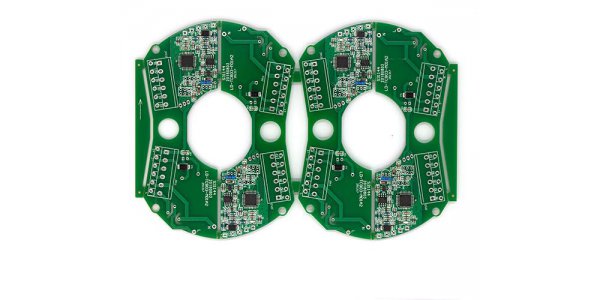Simply put, solder paste is made up of flux and metal ball inside. The properties of solder paste can be changed by adding tackier, rheological enhancer and changing the chemical properties of flux. One of the main specifications of solder paste is the percentage of metal by weight. For stencil PCB Printing, solder paste with 90% alloy weight is usually specified based on the consideration of viscosity. For the general eutectic 63Sn / 37Pb alloy with flux density of 1G / cc and metal weight of 90%, it is necessary to deposit 1.92 times (volume conversion coefficient) more than the calculated solid volume. The volume fraction of the metal in the solder paste is 52%. In reflow soldering, nearly half of the solder paste volume will be lost due to flux evaporation and residue.
The volume of solder in an ideal solder joint can be calculated by the following formula:
① The radius of fillet at the top of solder joint R = pad radius-a;
② The center of gravity position of solder joint head is 0.2234r;
③ The center position of solder joint head is 0.2234r + a;
④ The volume of solder joint head VF = o.215r2 × 2 × 3.14 × (02234r + a);
⑤ The volume of solder in the through hole is VPTH = 3.14 × h × (r2-a2);
⑥ The total volume of solder joint VT = VPTH + 2VF.
Where, r = through hole radius; H = PCB thickness; L = component pin section length; w = component pin section width.

Then, the amount of solder paste required for solder joint can be calculated by the following formula:
① The amount of solder paste to be printed vs = BVT;
② The amount of solder paste in the through hole VH = (3.14 × r2h) K;
③ The amount of solder paste printed on the surface of PCB board VSURF = vs VH.
Among them, B = volume conversion coefficient of solder paste after reflow melting and curing; filling coefficient of solder paste in through-hole.
The volume conversion coefficient is related to the parameters of solder paste metal content, flux density, alloy composition, printing parameters, through hole and pad size, mesh thickness and pin characteristics, which can be obtained by the following formula:
b=(Wm/Pm+(100—Wm)/Pf)/(Wm/Pm)
Where WM is the metal content (weight percentage); PM is the alloy density; PF is the flux density.
The solder paste volume printed in PCB through holes and pads will decrease after reflow soldering. If this reduction factor is compared with the common solder paste (85% metal weight) with the same composition and flux type, the solder paste with 2.46 times more than the calculated solid solder can be used. Compared with the solder paste printed on the screen PCB, the increase of the volume must be balanced in order to reduce the metal composition and increase the lubricating ability of the solder paste. Although the automatic dispensing machine has flexibility, it also brings the problems of cost increase and corresponding residue increase due to the increase of solder paste volume.
The THR volume model is related to the alloy type, flux density and metal weight percentage in the solder paste. The metal volume percentage, density and solder paste reduction factor can be calculated automatically by computer. The model can also include a part which is used for PCB printing process, which can provide users with the information of PCB thickness, printing pressure, printing speed and scraper angle. These parameters are used to predict how much solder paste will be used to fill PTH with specific hole size and solder paste characteristics.
